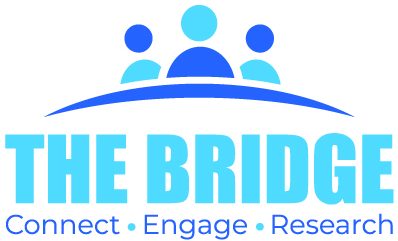Catherine B. Charron, Alzahra Hudani, Tina Kaur, Tiffany Rose, Kelly Florence, Sadia Jama and Smita Pakhalé
Background
The Ottawa Citizen Engagement and Action Model (OCEAM) used a Community Based Participatory Action Research (CBPAR) approach by involving the most at-risk urban population. Community (peer) researchers participated in every step of the study despite the multiple challenges.
Objective
To assess the community researchers’ training and experiences in a CBPAR project, PROMPT: Participatory Research in Ottawa: Management and Point-of-care for Tobacco Dependence.
Method
Four community researchers were recruited, representative of the PROMPT project’s target population with current or past poly-substance use; smoking tobacco; and/or being homeless or at-risk for homelessness. The community researchers participated in all phases of PROMPT, including study design, development of questionnaires, participant recruitment, administering consent forms and questionnaires, as well as hand-held spirometry after rigorous training. To assess their knowledge and comfort level with spirometry testing after standardized training, questionnaires were administered pre- and post-training. In turn, to assess their overall experience, interviews were conducted at the end of study completion.
Results
All community researchers underwent small-group training sessions including presentations, discussions and hands-on practice adapted from standardized training material prepared for health care professionals. Spirometry training was included in all sessions. Self-perceived knowledge and confidence in administering spirometry, as well as skill-testing score averages improved between the pre- and post-training questionnaires. Overall, all the community researchers had a fulfilling experience participating in the project.
Conclusion
Despite challenges, involving community researchers with lived experience is feasible, satisfying and productive even in the most marginalized populations. Standardized spirometry training of community researchers’ representative of the PROMPT target population, with no healthcare educational background, was feasible and effective in improving knowledge, confidence and readiness to administer spirometry.
View paper on BMC
Smita Pakhale, Tina Kaur, Catherine Charron, Kelly Florence, Tiffany Rose, Sadia Jama, Robert Boyd, Joanne Haddad, Gonzalo Alvarez, Mark Tyndall
Objective
To determine the feasibility of a Community-Based Participatory Tobacco Dependence Strategy (PROMPT) in the inner city population of Ottawa (Canada).
Design
A feasibility mixed methods prospective cohort study following principles of community-based participatory action research.
Intervention
Recruited 80 people who use drugs, followed them for 6 months while providing access to counselling, nicotine replacement therapy and peer-support in a… community setting.
Setting
Community research office in downtown Ottawa, adjacent to low-income housing, shelter services and street-based drug consumption.
Primary outcome
Retention rate at 6-month follow-up.
Secondary outcome
Biochemically validated 7-day point prevalence smoking abstinence at 26 weeks, self-reported abstinence in the past 7 days with exhaled carbon monoxide ≤10 ppm.
Results
The average age of participants was 43.8 years. The 6-month follow-up rate was 42.5%. The mean number of smoking years reported was 27.3 years. The participants were 70% male, 33.7% reported less than a high-school education, 21% identified as Indigenous and 43.8% reported an income between US$1000 and US$1999 per month. The baseline mean daily cigarette use was 20.5 and 9.3 cigarettes at study end, with mean reduction of 11.2 cigarettes at 6 months (P=0.0001). There was a considerable reduction in self-reported illicit substance use (18.8%), including a reduction in the opioids heroin (6.3%), fentanyl (2.6%) and Oxycontin (3.8%). The study findings also reveal psycho-socioeconomic benefits such as improved health, return to work and greater community engagement.
Conclusions: The PROMPT project describes socioeconomic variables associated with tobacco and poly-substance use. A programme focused on tobacco dependence, easily accessible in the community and led by community peers with lived experience is feasible to implement and has the potential to support positive life changes. PROMPT’s patient engagement model is an effective harm-reduction strategy for the growing opioid use crisis and can improve the health outcomes of marginalised at-risk populations worldwide.
View the PROMPT paper on BMJ Open
Smita Pakhale, Tina Kaur, Kelly Florence, Tiffany Rose, Robert Boyd, Joanne Haddad, Donna Pettey, Wendy Muckle and Mark Tyndall
The PROMPT study is a community-based research project designed to understand the factors which affect smoking as well as ways to manage, reduce and quit smoking among people who use drugs in Ottawa. There is strong medical evidence that smoking tobacco is related to more than two dozen diseases and conditions. Smoking tobacco remains the… Continue reading The Ottawa Citizen Engagement and Action Model (OCEAM): A Citizen Engagement Strategy Operationalized Through The Participatory Research in Ottawa Management and Point-of-Care of Tobacco (PROMPT) Study
The PROMPT study is a community-based research project designed to understand the factors which affect smoking as well as ways to manage, reduce and quit smoking among people who use drugs in Ottawa.
There is strong medical evidence that smoking tobacco is related to more than two dozen diseases and conditions. Smoking tobacco remains the leading cause of preventable death and has negative health impacts on people of all ages. Although Ottawa has one of the lowest smoking rates in Ontario (12 %), major differences exist, with approximately a 96 % smoking rate among those who use drugs in the city of Ottawa.
To address this inequity, we recruited and trained four community research peers who were representative of the study target population (ex- or currently homeless, insecurely housed or multi-drug users). We designed the ten-step Ottawa Citizen Engagement and Action Model (OCEAM) for the PROMPT study. In this paper we have described this process in a step-by-step fashion, as used in the PROMPT study. The eighty PROMPT participants are being followed for six months and are being provided with free and off-label Nicotine Replacement Therapy (NRT).
View the OCEAM model on BioMed Central
Background
Globally the burden of Obstructive Lung Diseases (OLD) is growing, however its effect on urban poor populations with the high prevalence of tobacco dependence is virtually unknown. The purpose of this project is to estimate the prevalence and burden of OLD in the urban, low-income populations of Ottawa, Canada.
Methods
The study presented in this paper was part of the PROMPT (Management and Point-of-Care for Tobacco Dependence) project; a prospective cohort study in a community-based setting (n = 80) with meaningful Patient Engagement from design to dissemination. Spirometry data, standardized questionnaires and semi-structured interviews from PROMPT were interpreted to understand the lung function, disease burden and social determinants (respectively) in this population.
Results
The prevalence of OLD among those who completed spirometry (N = 64) was 45–59%. Generic and disease-specific quality of life was generally poor in all PROMPT participants, even those without OLD, highlighting the higher disease burden this vulnerable population faces. Quality of life was impacted by two major themes, including i) socioeconomic status and stress and ii) social networks and related experiences of trauma.
Conclusion
The prevalence and disease burden of OLD is significantly higher in Ottawa’s urban poor population than what is observed in the general Canadian population who smoke, suggesting an etiological role of the social determinants of health. This urges the need for comprehensive care programs addressing up-stream factors leading to OLDs, including poor access and utilization of preventive healthcare addressing the social determinants of health.
https://bmcpublichealth.biomedcentral.com/articles/10.1186/s12889-021-10209-w
Diseases such as HIV/AIDS and Hepatitis-C (HCV) thrive in conditions of poverty and marginalization. Research on the quality of life of people living with HIV/AIDS reveals that unemployed individuals report more depression, anxiety, social isolation, and low self-esteem than employed individuals. Moreover, unemployment is a key factor in the contemplation of suicide among people with HIV/AIDS. Alternatively, employment among people living with HIV/AIDS is a strong indicator of… Continue reading A Healthy People Initiative: A Randomized Controlled Trial Building the Socio-Economic Capital of Low Income Population At-risk for HIV and Hepatitis-C (HPI Pilot Trial)
Diseases such as HIV/AIDS and Hepatitis-C (HCV) thrive in conditions of poverty and marginalization. Research on the quality of life of people living with HIV/AIDS reveals that unemployed individuals report more depression, anxiety, social isolation, and low self-esteem than employed individuals. Moreover, unemployment is a key factor in the contemplation of suicide among people with HIV/AIDS. Alternatively, employment among people living with HIV/AIDS is a strong indicator of improved quality of life. A finding we confirmed in our research study (PROMPT) supporting 80 members of Ottawa’s low-income homeless (or at-risk for homelessness) people Who Use Drugs reduce (and in some cases quit) smoking.
Many PROMPT participants repeatedly stated that boredom and a lack of meaningful social connections and employment were major hindrances in their reduction and overall recovery from smoking and drug use. We propose a community-based participatory action study that builds the social capital of 80 participants that identify as members of Ottawa and Toronto’s low-income People Who Use drugs living with or are at-risk for HIV/AIDS/HCV. The proposed multi-site study will include life-skills training, counseling, health services access, and education on HIV/AIDS/HCV. Most importantly the study will include a poverty reduction intervention that connects participants with short-term work and volunteer opportunities that are made possible with the support of local business owners and networks. The aim of study will be to demonstrate the feasibility of holistic healthcare that encourage a state of complete physical, mental, and social well-being.
At the Bridge, we work closely with people who self-identify as homeless, at risk for homelessness, low-income racialized including Indigenous populations. These same people also suffer from poor mental health, addictions to tobacco, alcohol and drugs. We experienced that the student volunteers or trainees at the Bridge also hold similar stigma, stereotype and racism against… Continue reading Education on Racism, Stereotype and Stigma: A Mixed-Method Study Assessing Effectiveness of the Bridge Inclusivity Training (BIT)
At the Bridge, we work closely with people who self-identify as homeless, at risk for homelessness, low-income racialized including Indigenous populations. These same people also suffer from poor mental health, addictions to tobacco, alcohol and drugs. We experienced that the student volunteers or trainees at the Bridge also hold similar stigma, stereotype and racism against the Bridge populations. Hence, the Bridge has developed a Bridge Inclusivity Training (BIT) in partnership with community peer researchers with lived experience. Over the past several years, we have thus far administered BIT to multiple students (medical and non-medical) with great success. It is an in-person training provided in partnership with community peer researchers over 3-4 hours where multiple case scenarios are discussed in a non-judgmental, open discussion format. Students get to ask questions and seek input from people with lived experience of poverty, marginalization, especially racism, in the healthcare settings.
Currently, we are evaluating the adaptation and Effectiveness of the Bridge Inclusivity Training (BIT) for medical trainees. This pilot evaluation process of BIT aims to provide suitable training for medical trainees to improve their awareness and responsibilities to society’s most marginalized people and the Canadian healthcare. It will also allow us to understand how to best evaluate the effectiveness of such activities as BIT. BIT aims to produce adapted inclusivity training and standardized patient assessment for future medical graduates. BIT seeks to help these students get the concrete skills they need to provide culturally competent and compassionate care as students and as future doctors.
This project is ongoing

